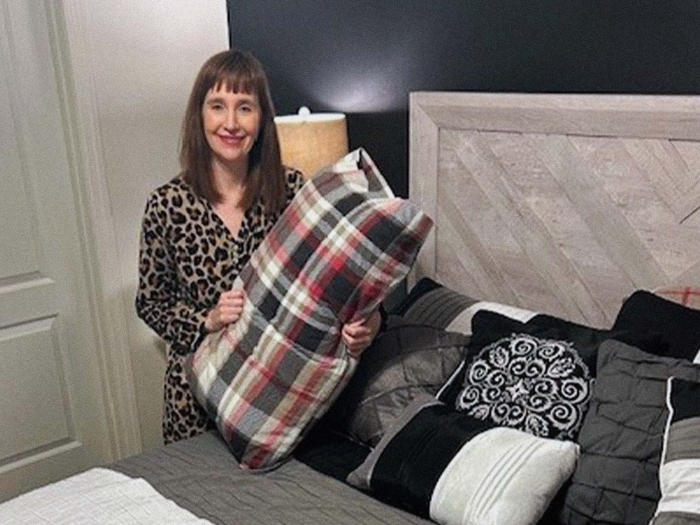Home testing is becoming more common to diagnose obstructive sleep apnea, with many insurance providers considering it a cost-effective alternative and some patients preferring its convenience. But it isn’t suitable for everyone.
8:00 AM
Author |

In the past, obstructive sleep apnea (OSA) could only be diagnosed one way: through a sleep study, or polysomnography.
That's still the most comprehensive assessment. But it also involves spending a night away from home hooked to a bevy of electrodes and machinery in a clinic bed. Home sleep apnea tests have given many people a convenient, more comfortable means of evaluation.
OSA is characterized by repeated obstructed or restricted breathing for periods of 10 seconds or longer, and it affects more than 25 million Americans. It leads to oxygen shortages that, in turn, result in health outcomes far worse than simply noisy breathing and unrefreshing sleep. OSA is associated with increased risk of stroke and heart disease, among other medical conditions.
Doctors, then, might recommend home testing or a formal sleep study to make sure people get the accurate diagnosis — and treatment — they need.
With awareness of the condition and requests for home screenings on the rise, "it's a very reasonable test to consider as an alternative for patients who are highly likely to have moderate to severe OSA" says Neeraj Kaplish, M.D., an assistant professor of neurology and the medical director of the Sleep Lab at the University of Michigan's Sleep Disorders Center. "But for a lot of patients, it's probably not the appropriate testing."
Below, Kaplish explains a few pros and cons of home sleep apnea tests.
Pro: They are comfortable
Sleeping in an unfamiliar bed during a sleep study and being hooked up to multiple electrodes may be unappealing to patients, or even frightening. A home test, by contrast, is administered in the comfort of one's own bedroom. After the proper education, patients typically affix just a finger oxygen probe, a chest belt and a nasal tube before hitting the pillow as they normally would.
Pro: They cost less
Insurance companies, Kaplish says, are increasingly moving toward potentially cost-effective home sleep apnea tests as a first line of action before covering standard overnight sleep studies, which are quite a bit more expensive, although costs vary as reimbursement rates change for polysomnography.
Con: They aren't as detailed
A home test only measures breathing, not actual sleep, so results can be inconclusive or falsely negative. Patients with OSA often breathe through their mouths, which may lead to inaccurate signals. Although rare, a self-administered device may become loose on the finger at night, too. On the other hand, a comprehensive in-lab test — with sensors to record airflow, respiratory effort, brain waves and many other functions — gathers clinically useful information such as how many times a person wakes up at night and leg movements during sleep.
Con: They work best with serious cases
Because a home test has limited scope, only patients already assumed to have high risk for moderate or severe sleep apnea should use them. Insurers sometimes base that classification on results of an eight-point checklist known by the acronym STOP BANG:
- Snoring loudly
- Tiredness, fatigue or sleepiness during the day
- Observation by someone else of stopped breathing
- Having high blood Pressure
- BMI greater than 35
- Age over 50 years
- Neck circumference larger than 16 inches (40 cm)
- Gender (sleep apnea is far more common among males)
A "yes" score of 5 or higher may make a home test appropriate, Kaplish says.
Con: They don't suit everyone
Those with pre-existing conditions, such as lung disease, hypoventilation, heart failure, or other sleep disorders, such as restless legs syndrome, central sleep apnea or parasomnias, aren't candidates for home testing. Home studies have not been validated for some patients with these conditions, and they're not likely to produce conclusive results. A monitored, more-detailed polysomnography is the only option for those individuals.
Still, whether one's test takes place at home or in a clinic, Kaplish maintains that taking action to address and monitor the problem is important. "People are more and more aware about sleep deprivation," he says. "There are consequences for sleep problems going undiagnosed."
MORE FROM MICHIGAN: The Michigan Medicine Sleep Disorders Center offers home sleep apnea testing. Contact the Center for information.

Explore a variety of health care news & stories by visiting the Health Lab home page for more articles.

Department of Communication at Michigan Medicine
Want top health & research news weekly? Sign up for Health Lab’s newsletters today!





